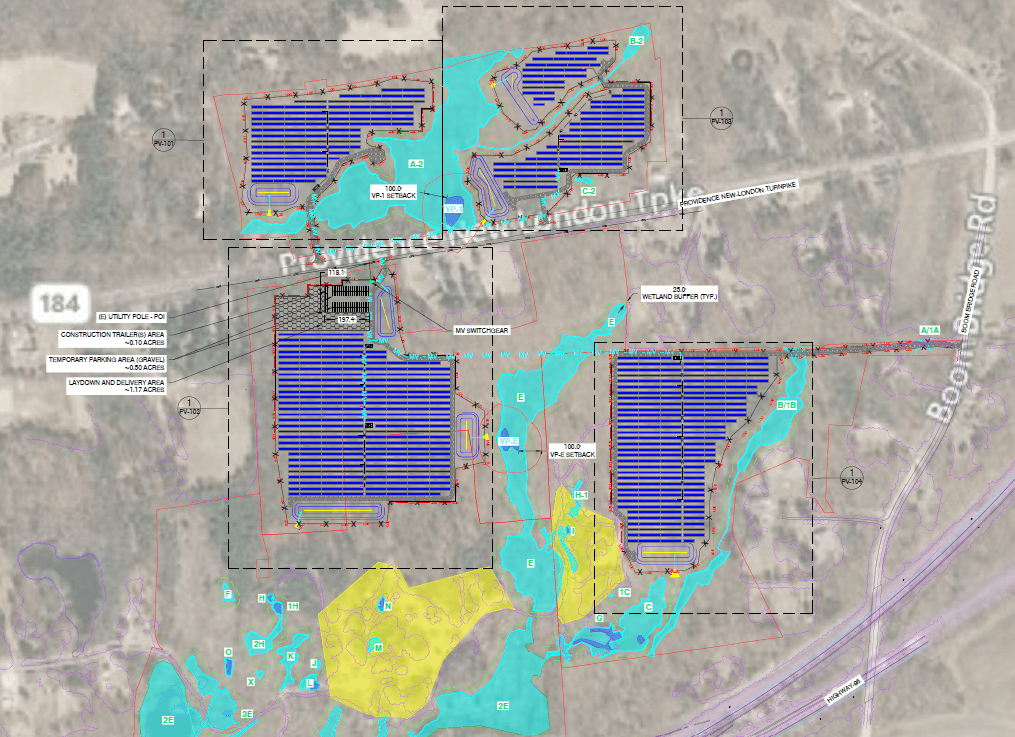NORTH STONINGTON — The Connecticut Siting Council will hold a public hearing for a proposed 47-acre solar project in the town that has drawn scrutiny from residents and town officials who have questioned whether the residential site is suitable for a large solar development.
Nashville-based Silicon Ranch has proposed building a 9.9 megawatt solar project that would cover about 47 acres of land on the north side of Interstate 95, west of Boombridge Road. The project, which would involve clearing about 46 acres of forest.
Town officials requested the public hearing, and for the deadline for public comments to be extended to April 26, so they would have time to hire a soil scientist to review the site. The date of the public hearing has not yet been set.
In Connecticut, a state board called a Siting Council — not local officials or land use boards — has authority over siting energy-generating facilities.
Juliet Hodge, North Stonington’s planning, development and zoning official, wrote to the Siting Council to underscore the fact that the town does not take issue with the installation of solar arrays. The town’s plan of conversation and development calls for town officials to “encourage and permit green energy facilities,” and the town did not oppose a larger, 353-acre solar array in an industrial zone off of Ella Wheeler Road, Hodge explained to state officials.
According to Hodge, when the town was first approached in 2016 about a possible solar project, the plans only included the southern portion of the properties that is a former gravel pit. The town did not resist those plans, because the gravel pit seemed to be a good fit, despite the property being in a residential zone.
The North Stonington Board of Selectman said in a letter to the council that they were concerned that the project would clear trees in an undisturbed section of core forest on the property, rather than use the former gravel pit. They acknowledged that there were vernal pools that could be affected in the area of the gravel pit, but suggested that “the health of these pools may not be as strong as other pools in the area.”
Along with disturbing the forest, siting the solar panels on the northern section of the property would limit the wooded buffer between people who live north of the property and Interstate 95. The selectmen said residents immediately north of the project site are worried about the setback from their property lines to the edge of the proposed clearing.
“The solar project as currently proposed is certainly not in harmony with the surrounding residential neighborhood and would have a detrimental effect on quality of life and the appearance of the currently rural setting of the immediate vicinity,” Hodge wrote. “If the majority of the project were located in the former gravel bank area, it certainly would be more palatable as that area is more remote, has already been cleared, and is generally unsightly.”
Hodge wrote that the entire project area is within the town’s water supply protection area, and contains wetlands and vernal pools. She said more time should be given to allow for a more thorough review of the area to make sure it’s suitable for the development.
According to the letter from the selectmen, the town is looking to hire a soil scientist to review the area.

